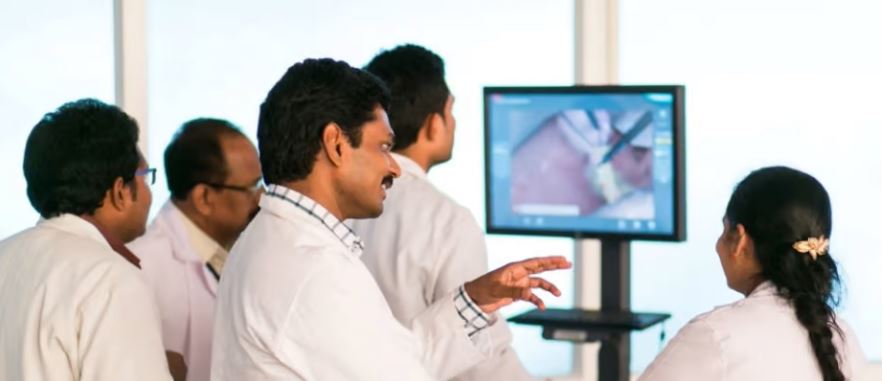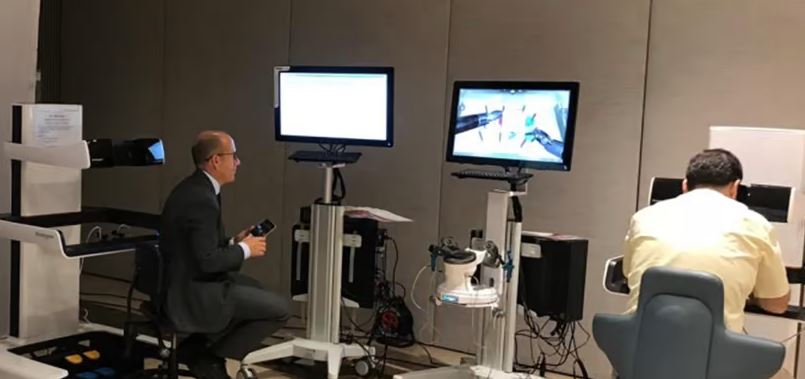技术
- 分析与建模 - 机器学习
- 传感器 - 相机/视频系统
适用行业
- 水泥
- 教育
适用功能
- 产品研发
用例
- 智慧城市供水管理
- 泄漏与洪水监测
服务
- 系统集成
- 培训
关于客户
本案例研究的客户是 NASA 喷气推进实验室 (JPL),它是太阳系机器人探索的领先中心。自太空时代开始以来,喷气推进实验室就一直参与太空探索,并将航天器发射到太阳系的所有行星。喷气推进实验室的海洋世界生命勘测者 (OWLS) 项目目前正在准备向太阳系中已发现水的一颗卫星发送一艘航天器。 JPL 的机器学习仪器自治 (MLIA) 小组负责开发机器学习模型来帮助这一探索。
挑战
美国宇航局喷气推进实验室 (JPL) 的使命是在太阳系中寻找生命迹象,重点关注水的存在,水是生命的重要元素。喷气推进实验室的海洋世界生命勘测者 (OWLS) 项目正准备向木卫二(木星的卫星)或土星的卫星土卫二(土星的卫星)发射一艘航天器,在那里发现了冰和水蒸气。该航天器将配备显微镜来收集水样的视频数据,寻找微生物的证据。然而,由于距离遥远,将这些显微镜数据发送回地球是一项复杂且成本高昂的任务。传统的压缩方法是不够的,并且下行数据的能源成本极高。喷气推进实验室的机器学习仪器自主 (MLIA) 小组面临着构建机器学习 (ML) 模型的挑战,该模型可以识别最有可能包含生命迹象的视频、捕获短片并优先考虑将其下行传回地球。
解决方案
MLIA 团队决定使用传统的机器学习方法(例如决策树和支持向量机)来构建一个模型,该模型可以安装在航天器的计算机上,查找和跟踪移动粒子,区分逼真的运动与漂移或推挤,并有效地解释其决策。该团队还与科学家密切合作,审查模型输出并验证模型的准确性。为了创建他们的算法,该团队对来自各种现场水样和实验室培养样本的大量多样化数据进行了标记。然而,创建和维护内部标签解决方案具有挑战性。为了克服这个问题,MLIA 团队转向 Labelbox 作为培训数据平台和劳动力。该团队上传了从数字全息显微镜收集的视频数据集,Labelbox Workforce 团队快速注释了这些资产,使 MLIA 团队能够专注于其他任务并更快地推进项目。
运营影响

Case Study missing?
Start adding your own!
Register with your work email and create a new case study profile for your business.
相关案例.

Case Study
System 800xA at Indian Cement Plants
Chettinad Cement recognized that further efficiencies could be achieved in its cement manufacturing process. It looked to investing in comprehensive operational and control technologies to manage and derive productivity and energy efficiency gains from the assets on Line 2, their second plant in India.

Case Study
Revolutionizing Medical Training in India: GSL Smart Lab and the LAP Mentor
The GSL SMART Lab, a collective effort of the GSL College of Medicine and the GSL College of Nursing and Health Science, was facing a challenge in providing superior training to healthcare professionals. As clinical medicine was becoming more focused on patient safety and quality of care, the need for medical simulation to bridge the educational gap between the classroom and the clinical environment was becoming increasingly apparent. Dr. Sandeep Ganni, the director of the GSL SMART Lab, envisioned a world-class surgical and medical training center where physicians and healthcare professionals could learn skills through simulation training. He was looking for different simulators for different specialties to provide both basic and advanced simulation training. For laparoscopic surgery, he was interested in a high fidelity simulator that could provide basic surgical and suturing skills training for international accreditation as well as specific hands-on training in complex laparoscopic procedures for practicing physicians in India.

Case Study
IoT platform Enables Safety Solutions for U.S. School Districts
Designed to alert drivers when schoolchildren are present, especially in low-visibility conditions, school-zone flasher signals are typically updated manually at each school. The switching is based on the school calendar and manually changed when an unexpected early dismissal occurs, as in the case of a weather-event altering the normal schedule. The process to reprogram the flashers requires a significant effort by school district personnel to implement due to the large number of warning flashers installed across an entire school district.

Case Study
Digital Transformation of Atlanta Grout & Tile: An IoT Case Study
Atlanta Grout & Tile, a Tile, Stone & Grout restoration company based in Woodstock, Georgia, was facing challenges with its traditional business model. Despite steady growth over the years, the company was falling behind the web revolution and missing out on the opportunity to tap into a new consumer base. They were using independent software from different vendors for each of their department information and workforce management. This resulted in a lot of manual work on excel and the need to export/import data between different systems. This not only increased overhead costs but also slowed down their response to clients. The company also had to prepare numerous reports manually and lacked access to customer trends for effective business decision-making.

Case Study
Implementing Robotic Surgery Training Simulator for Enhanced Surgical Proficiency
Fundacio Puigvert, a leading European medical center specializing in Urology, Nephrology, and Andrology, faced a significant challenge in training its surgical residents. The institution recognized the need for a more standardized and comprehensive training curriculum, particularly in the area of robotic surgery. The challenge was underscored by two independent studies showing that less than 5% of residents in Italian and German residency programs could perform major or complex procedures by the end of their residency. The institution sought to establish a virtual reality simulation lab that would include endourological, laparoscopic, and robotic platforms. However, they needed a simulator that could replicate both the hardware and software of the robotic Da Vinci console used in the operating room, without being connected to the actual physical console. They also required a system that could provide both basic and advanced simulation training, and a metrics system to assess the proficiency of the trainees before they performed surgical procedures in the operating theater.








